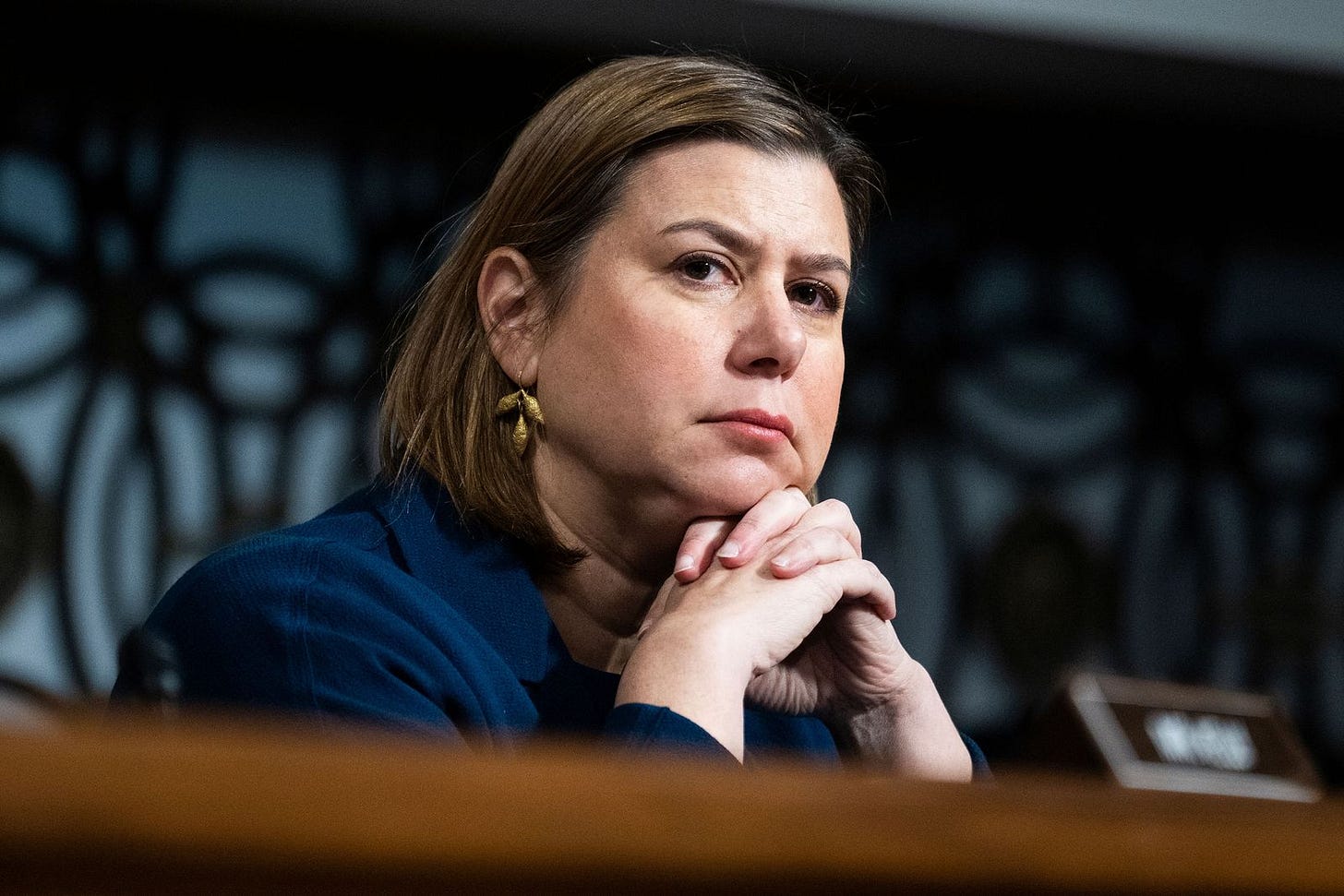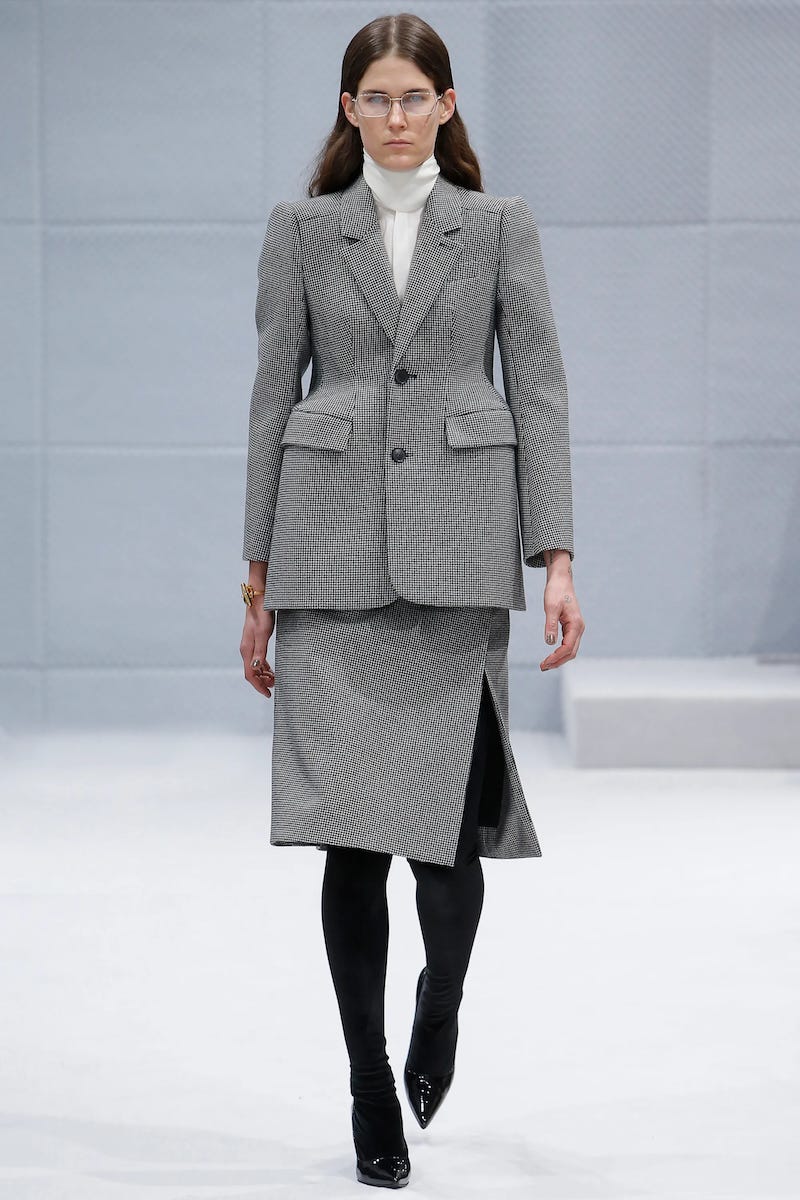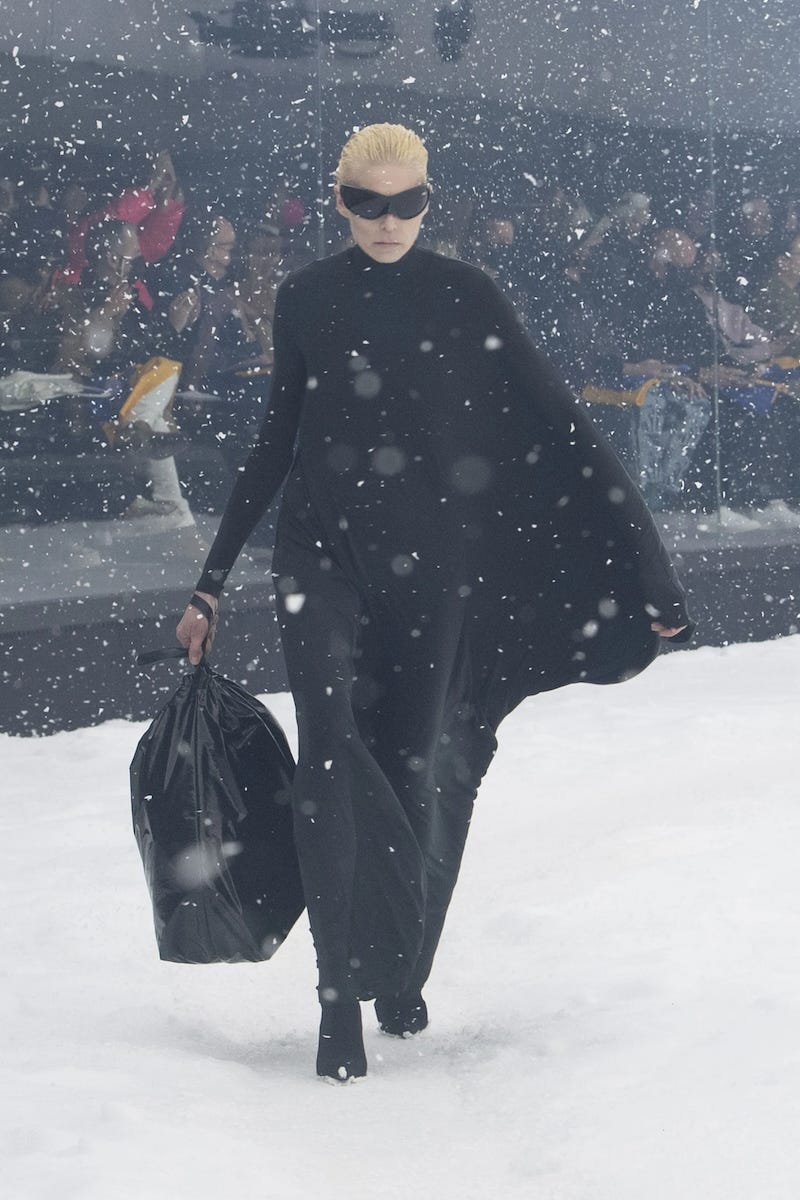Authoritarian Style Is Trending. Should a U.S. Senator Be Wearing It?
From sharp shoulders to military greens, Elissa Slotkin’s look channels control—and controversy. What happens when fashion’s most intimidating aesthetic enters the halls of American power?

Politics have become so deeply polarizing that it’s rare to see moderate ideologies or people that represent both sides of the aisle. It’s why I was surprised to see Elissa Slotkin, Michigan’s newly appointed junior Democratic Senator, sporting a greyish-green blazer and matching turtleneck on The Bulwark’s video podcast. Did she realize it would evoke authoritarian images of uniformity, themes counter to her political position? The broad, defined shoulders and stark color certainly echoed her militant background—three tours in Iraq as a CIA analyst.
And while Slotkin certainly isn’t the only senator pushing these themes (Ron DeSantis [R-FL] is often wearing tactical gear off-duty, and Dan Crenshaw [R-TX], a former Navy SEAL, is usually depicted in a militant context), she is one of the few Democrats using her image to appeal to both sides seemingly. But are Americans ready to accept this sort of style from their political leaders? In today’s climate, it’s difficult to gauge what resonates with the public.
Know someone who’d enjoy this? Gift them a free subscription on us (and you!). Stories are always better when there’s someone to discuss them with.
It wasn’t that long ago that the idea of uniformity evoked images of Soviet Russia and heralded an era of dictatorship. Women, with their straight bobbed cuts and military jackets, imagery similar to Slotkin here, become both a costume and a symbol of authoritarian power. These visual echoes of history are hard to shake, and the styles they inspired remain potent, especially for older voters.
Her stylistic choices also happen to be coming at a time when ICE agents and police occupy the streets of L.A.’s fashion district, and a radicalized president deploys fear and militarized control to reign unchecked. In times like these, authoritarian fashion is a hard pill to swallow.
However, Americans have also been prepared for the resurgence of military-style narratives. Apple TV+ released "Masters of the Air" in January 2024, which became its most-watched debut to date. Amazon Prime also released "The Narrow Road to the Deep North" earlier this year, receiving astounding critical acclaim and an increasing viewership. Audiences have been primed—perhaps even softened—to accept and absorb the idea of war as a fact of life.
And it’s not just entertainment. For those inside the machine—or at least paying close attention—fashion has been veering toward authoritarian and military aesthetics for quite some time.
Demna, co-founder of Vetements and the creative director of Balenciaga for the last decade, is a product of the USSR, his experiences often defining his work.
It’s hard to forget his debut look: a skirt suit with truncated sleeves and exaggerated hips, as if designed for uniformity with no regard for individual fit. Even harder to forget was his Fall 2022 collection, where models trudged through simulated blizzards, gripping leather trash bags and wearing whatever clothing scraps they could find. “Personally, I have sacrificed too much to war,” he told reporters after the show.
From rigidity to the dictatorial edge of his work, Demna’s style has come to define not only the house of Balenciaga but fashion more broadly. Streetwear enthusiasts adopted his baggy, “make do with what you have” silhouettes, while luxury brands followed suit. Louis Vuitton brought on Virgil Abloh to translate this style into relevant luxury. Saint Laurent, under Anthony Vaccarello, abandoned its sleek, minimalist roots for oversized corporate suiting and militant touches.
Even smaller labels, like Willy Chavarria and Y/Project, both steeped in similar aesthetics, began to gain traction, as well as historic brands resurfacing in popularity, such as Jean-Paul Gaultier and Margiela, whose longstanding flirtations with destruction and uniformity are now front of mind. It’s easy to see how stylistically militant aesthetics are creeping into the cultural fold.
It’s not as if Slotkin is paying attention to any of that, though. I doubt she even knows who Demna is, let alone shops for ready-to-wear. In her case, her militant background is surely shaping her sense of style more than anything happening on the runway. But I can’t say the same for her constituents, who have broader tastes and are, whether they realize it or not, more influenced by the fashion system.
And in that regard, Slotkin finds herself in the perfect storm: a figure with real authority, a background that mirrors the mood of the moment, and just enough visual edge to cut through the noise. As long as it comes with balanced policy that works for, not against, the American people, she has the upper hand over her fellow senators.
More Cultured Swine Insights… Instagram, Twitter (X), TikTok





